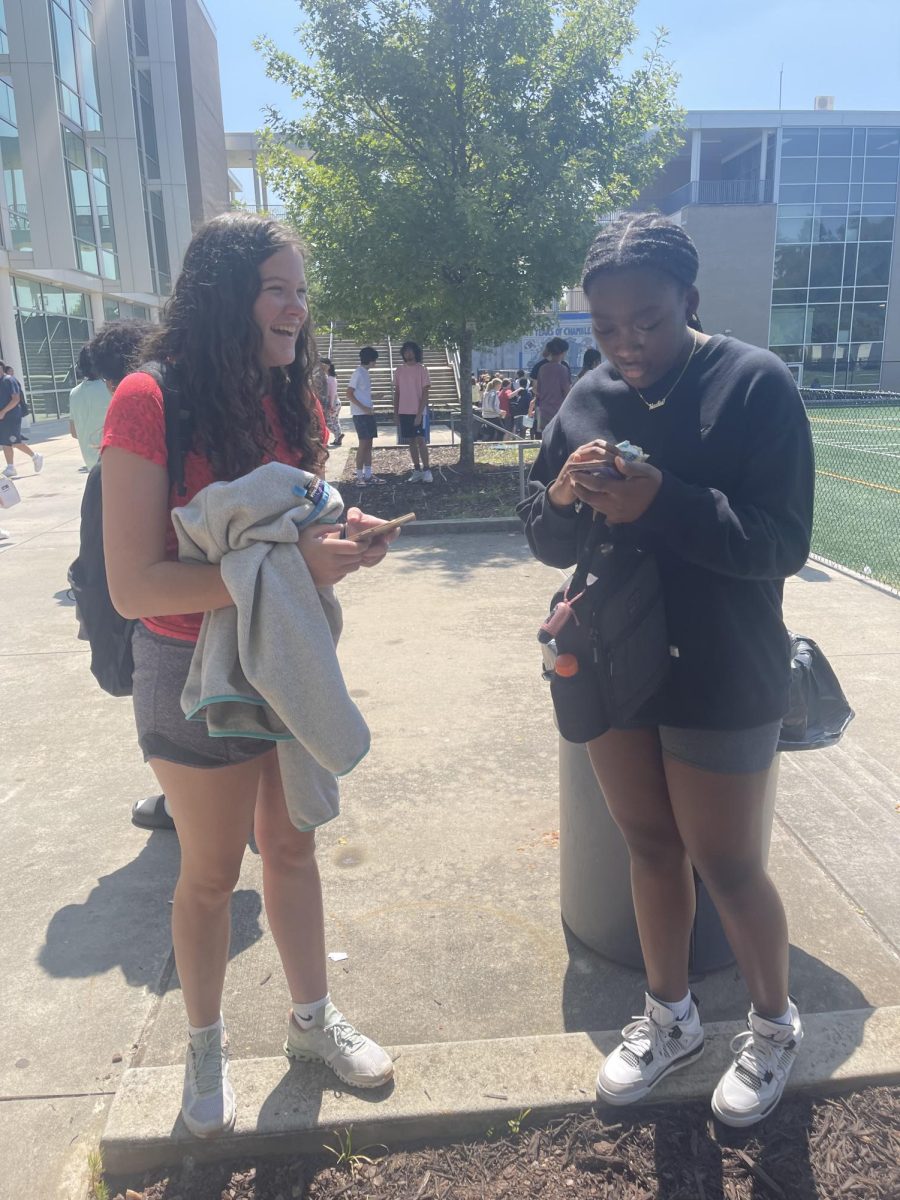Phones have taken over teenagers’ and adults’ lives and have affected them in many ways. Like many other schools across the country, Chamblee High School has been affected by the use of cell phones and other technology. Both students and staff have noticed this increase as the years pass.
“I am definitely using my phone a lot more this year,” said Ryan Moore (‘26).
Students and teachers have not only noticed an increase in phone usage but also an increase in reliance on technology.
“I have noticed that this year the freshmen [Class of ‘27] spend more time on it. They are engulfed with movies, gaming, and especially social media. This group is a little more addicted,” said Lanice Jones, a business teacher at CHS.
Students say that they almost always have their headphones and phones nearby for comfort and easy communication with their friends. However, phones can also be used to avoid these same interactions.
“I’m very reliant on my phone, but if I’m walking in the hallway with a friend I’m not on it much. If I am alone then I’m going to want to be on my phone—especially if you pass by a certain someone. You don’t want them to look at you, so you have to act like you are busy,” said Emma Essienumoh (‘26).
Students are sometimes nervous around their peers and prefer the comfort of their phones, especially when put into classes where they may not have many friends.
“I am more comfortable using my phone in class, especially if I don’t know many people,” said Mary Lynne Traynelis (‘26)
Students are often frightened by their Monday-through-Friday environment—particularly when around people who aren’t their friends or that they don’t know. In these scenarios, they often feel they have to resort to their devices.
“I feel more comfortable being on my phone in class, mostly because I don’t like the kids in my class,” said Moore.
Essienumoh, Moore, and Traynelis are only some of the many students facing uncomfortable or unpleasant social situations in Chamblee and across the nation. For many, comfort is easily gained through their phone, which can produce dilemmas in the learning environment.
“I always want my phone or AirPods near me so I can listen to music. Everyone is so loud, and sometimes they just need to shut up,” said Noa Robertson (‘26).
With an increasingly technology-based education system, including websites such as Google Classroom and Canvas, more and more of what’s used in school is found online—so it is no surprise that students feel obligated to stay on their phones, computers, and AirPods.
Some feel that they need their phones in the classrooms and the hallways, while others disagree.
“What if while I’m walking, there is a schedule change, or my mom dies? And I also love music,” said Robertson.
“I would rather not be on my phone while I am in the hallways because I want to be aware of where I am going and not bump into anyone,” said Traynelis.
In the classroom, teachers often have to stop and make students put their phones away or attempt to gain their full attention. This creates delays in teaching the entire lesson.
“I say the same thing every day. [Students] are so adapted to cell phones that it’s like second nature. It’s like having your keys to your car or unlocking your doors. They are so accustomed to phones. It’s not just kids, though. Adults are as addicted to phones as kids are,” said Jones.
On the other hand, students still feel they have been taught the same and haven’t lost any learning due to phones.
“No, I still pretty much get the same [education],” said Traynelis.
Students have also taken more of a hostile approach to the new cell phone policies this year, whereas teachers are attempting to do everything they can to control cell phone usage in their classes.
“I call it a friendly reminder, every day, regularly throughout the day, every class period. It’s a constant battle of telling kids to put their phones away,” said Jones.
When asked if teachers are trying to reduce cellphone usage, most students said that they have implemented rules, while some disagreed. Phone usage in classes usually depends on whether a teacher allows students to keep their phones with them while others require them to put their phones in wall pockets, far away from the learning environment.
Multiple students have noticed how teachers have implemented these rules, while other teachers don’t care as much.
“Some teachers make you put up your phone while others don’t care as much,” said Traynelis.
Some students, however, continue to use their phones as they please.
“No. I’ll use my phone when I use my phone,” said Essienumoh.
Throughout the school, phones are both loved and hated by teachers and students alike. Even teachers concur that phones are great resources.
“Phones are great resources. Some kids do their assignments on their phones. It’s not a problem until they can’t handle that privilege. It’s here to stay, but kids must learn how to use them wisely. Make it benefit you, not you benefit it,” said Jones.
As we continue to advance in technology, we will continue to face problems, from the obsession with phones in teenagers to the dislike of them by adults. Phone usage is an ongoing debate that currently has no end in sight. For now, students are pleased with the current phone rules, while teachers still fight the battle of balance with technology.








